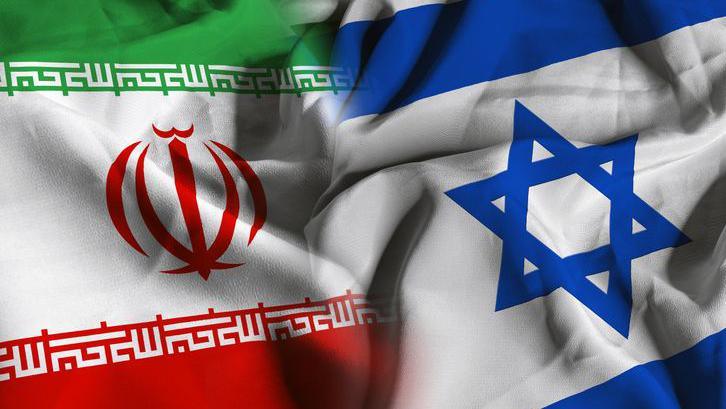ANALYSIS: Iran's Nuclear Defiance, Missing Uranium, and Crumbling Alliances Raise Global Alarms

GENEVA — A series of high-level statements from Iranian officials and international atomic watchdogs has escalated global tensions, placing a renewed spotlight on Tehran's nuclear ambitions, its categorical refusal to allow inspections, and a growing crisis over an unaccounted-for stockpile of highly enriched uranium.
Recent events have reignited a fierce debate over the nature and intent of the Iranian program, pitting Tehran’s assertions of peaceful purposes against a mounting body of evidence that critics, and now international monitors, say points toward a defiant, non-transparent, and dangerous trajectory.
An Official Admission of Defiance
The most recent escalation began not with a covert intelligence leak, but with an on-the-record declaration at the United Nations. Iran's top diplomat to the UN, Ambassador Amir-Saeid Iravani, stated unequivocally that the country's nuclear enrichment activities 'will never stop,' framing it as an 'inalienable right.' In a move that stunned international observers, Ambassador Iravani, in the same breath, confirmed that inspectors from the International Atomic Energy Agency (IAEA) 'do not have access to Iran’s nuclear facilities.'
This statement has been widely interpreted by Western diplomats as an official confession that Tehran is actively pursuing a nuclear program in direct and open opposition to international oversight. For years, Iranian state messaging has centered on the claim that its nuclear enrichment is solely for 'peaceful purposes.' However, critics argue that the simultaneous assertion of a right to enrich without verification renders such claims impossible to substantiate. 'A program that is not subject to verification cannot be verified as peaceful,' one senior European diplomat noted on condition of anonymity. 'It’s a direct contradiction, and it’s coming from their own ambassador.'
The 'Missing Bomb Arsenal' Crisis
Adding a tangible sense of urgency to the diplomatic standoff is the alarm raised by the IAEA itself over a substantial quantity of highly enriched uranium. IAEA Director-General Rafael Grossi has publicly confirmed that his agency can no longer account for a significant stockpile of uranium enriched to 60% purity—a level very close to the 90% needed for a weapon.
Multiple international security reports, citing IAEA data, now quantify this unaccounted-for stockpile as theoretically sufficient for 'more than nine nuclear bombs' if refined further. The core of the crisis lies in the IAEA's stark admission: it does not know if this weapons-potential material has been moved, where it is currently located, or for what purpose it is being stored. The ambiguity has created what some security analysts are calling a 'missing bomb arsenal' crisis, shifting the threat from a potential future capability to a present-day mystery with grave implications.
In response to these concerns, Director-General Grossi has emphasized that without access, the IAEA cannot provide assurances about the peaceful nature of Iran's program. This lack of transparency, combined with a resilient and expanding enrichment capacity, forms the foundation of the current international alert. 'It's not just that they have the material,' a former UN weapons inspector explained. 'It's that the world's nuclear watchdog, by Iran's own admission, is blind. That is an unprecedented situation for a program of this scale.'
A Resilient Threat Amid Strategic Isolation
Compounding the crisis is the consensus among international experts that Iran’s nuclear knowledge is now a permanent fixture. According to Director-General Grossi, even in the face of direct military or cyber-attacks on its facilities, Iran possesses the knowledge and industrial capacity to reconstitute its enrichment capabilities 'in a matter of months, or less.' This assessment frames the nuclear threat not as something that can be easily dismantled, but as a persistent and resilient challenge rooted in irreversible technical expertise.
While Tehran's technical capabilities appear resilient, its diplomatic and strategic standing shows signs of significant strain. Detailed analysis of the international response to the recent escalation reveals that Iran's key allies, China and Russia, offered only 'surprisingly muted' reactions. During the peak of the crisis, neither country provided significant material or robust diplomatic support for Tehran, a stark contrast to Iran's public rhetoric about its powerful strategic partnerships. Observers note that this indicates Iran’s proclaimed 'axis' of support 'crumbled when it matters,' leaving the regime far more isolated and exposed than its leadership projects to its people and the world.
The Human Cost of State Infrastructure
Away from the nuclear file, the regime's internal conduct has also come under harsh scrutiny following an admission from its own judiciary. Iranian officials confirmed that 71 people were killed in a recent strike on Tehran's notorious Evin Prison. The facility is infamous globally for holding political prisoners, journalists, dissidents, and foreign nationals.
According to the official report from the judiciary, the victims included not only inmates but also visiting family members and prison staff. This detail highlights what human rights organizations call the regime's callous disregard for human life, demonstrating its practice of co-locating critical and repressive state infrastructure in areas where civilians are knowingly put in harm's way.
As the international community grapples with these converging crises, the fundamental questions about Iran’s intentions remain. While Tehran continues to insist on its right to a peaceful program, its own officials have confirmed that the program is not, and will not be, open to inspection. The ultimate challenge for global policymakers now centers on a program shrouded in secrecy, run by a regime that appears increasingly isolated, and defined by a missing stockpile of material that brings it closer to a nuclear bomb than ever before.